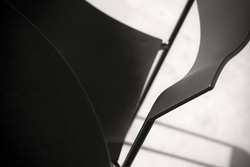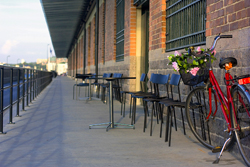New Trends in the Old World
New Trends in the Old World by Linn Arvidsson
What is happening in the European scene of photography? The short answer is: a lot. A complete answer is hardly possible to give even if one tried, but let us at least catch a glimpse of a much diversified contemporary scene. First and foremost, one has to remember that Europe is anything but homogenous. It is a continent put together by hugely different countries. What is a fact in Barcelona may be only a rumor in Berlin. Even so, there are trends joining together the entire continent, and one such trend is spelled ‘photography’.
Documentary photography has had a long and proud history, but it was really not until the 1990s that photography was truly accepted in the art collages as well. A generation change among the teachers combined with better equipment gave way for the budding growth of contemporary art photography. In the catalog of contemporary national artists, “Swedish Art Now – 85 Artists Born after 1960€ (published in 2004), 25 of the listed artists are photographers and more than 50 % are women. Some, like Maria Miesenberger and Charlotte Gyllenhammar also use other media such as sculpture. Others, like Anneè Olofsson and Maria Friberg, prefer to act as directors and let others snap the actual picture. In the 1990s, a large percentage of the women photographers used their works to explore gender issues. This is almost never seen today.
Never is the renewed energy of European photography more evident than during the European Month of Photography. This, the biggest festival dedicated to the promotion of photography in Europe, was first held in 2004 in Berlin, Paris and Vienna. Since 2006, Bratislava, Luxembourg, Moscow and Rome also have been involved. For the fourth edition of the Month of Photography in 2010, more than 120 institutions, including museums, cultural institutes and embassies, as well as photographic colleges, galleries and project spaces, presented over 250 exhibitions and events relating to historic and contemporary photography. The fourth edition presented itself as a festival in transition. This time the “month€ of photography lasted for six weeks, starting in mid October. The biggest change, however, was the experiment of confronting all participating institutions with a mandatory set theme. The objective was to have all the exhibitions and events focused on a single topic, so as to make the festival more prominent in the public eye and give it a higher profile.
The theme of the Berlin version of the 4th Month of Photography “Modern times, New Pictures€ pointed to the decisive influence that the medium of photography (and along with it, more recent graphic media as well) has had on the modern age, from industrialization right up to the present day. Not only did Modernism give birth to photography – photography also, in a reversal of roles, made an active contribution to the dissemination and strengthening of certain aspects of Modernism. This connection between photography and modernization was chosen as a leitmotif with reference to four selected fields: life and lifestyle in the big city (urbanization and street photography), fashion photography, photography and science, and new pictorial worlds – new techniques. The selected fields reappeared in the festival in the form of historic and – even more importantly – contemporary samples of the art.
In Sweden, the contemporary museum for photographic arts, ‘Fotografiska,’ opened its doors in May 2010 and before the end of the summer had counted more than 250,000 visitors. The huge success more or less forced the National Museum of Modern Arts, ‘Moderna Muséet,’ to rethink and move their photographic collection from the basement where it had been hidden for the last few years, to a more prominent place. And the new directors, Daniel Birnbaum and Ann-Sofi Noring, have declared they will launch a new presentation of the museum’s photographic collection. Photography will gradually be given a more prominent position, and will fill the entire exhibition of the permanent collection this autumn to the end of the year.
“We want to show the museum collection from a new perspective, but also to present an alternative art history, not one that is truer, but simply another perspective. We have noted a strong demand to see more of the museum’s large collection of photography among our visitors. With this venture, we hope to contribute in a way that only we can, and to give the public what they have a right to expect from us, namely an historic dimension. We are also intensifying our research into photographic images,€ says Daniel Birnbaum, director of Moderna Museet.
- by Linn Arvidsson (This article originally appeared in the Spring 2011 issue of IMPRINTS, the magazine of PWP)



